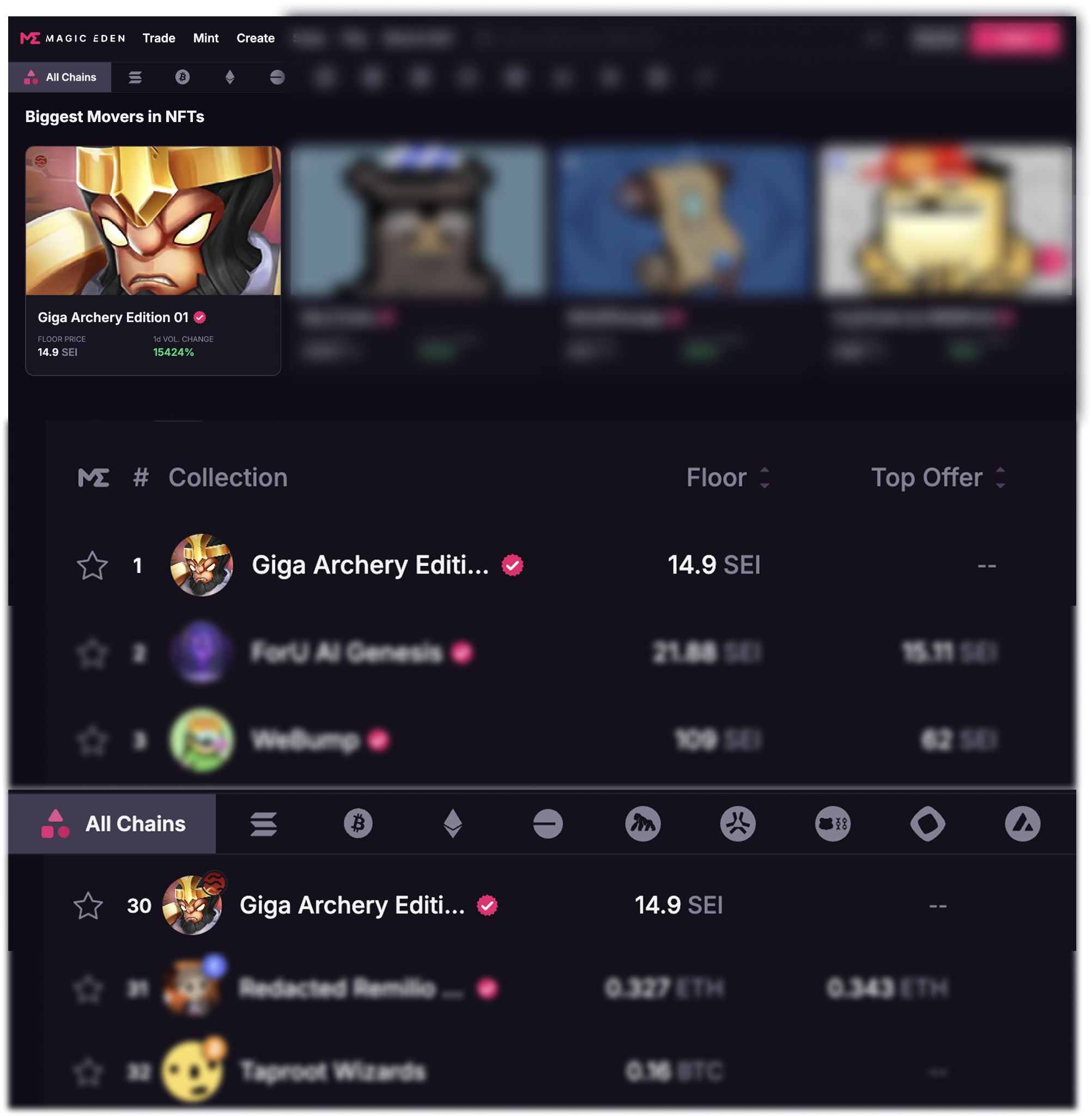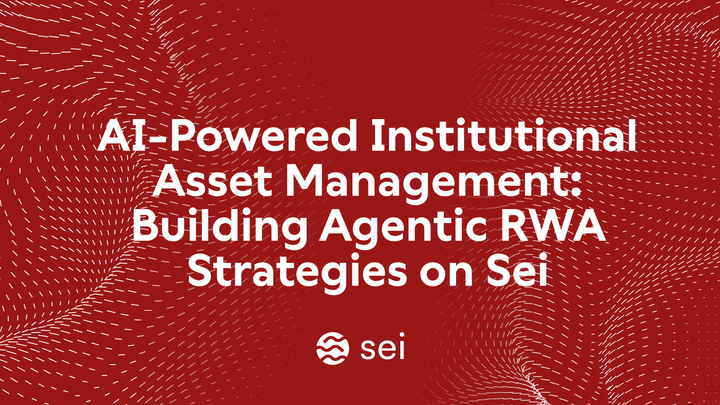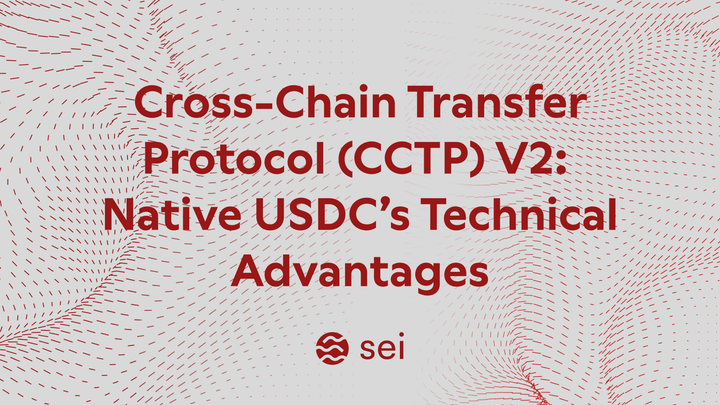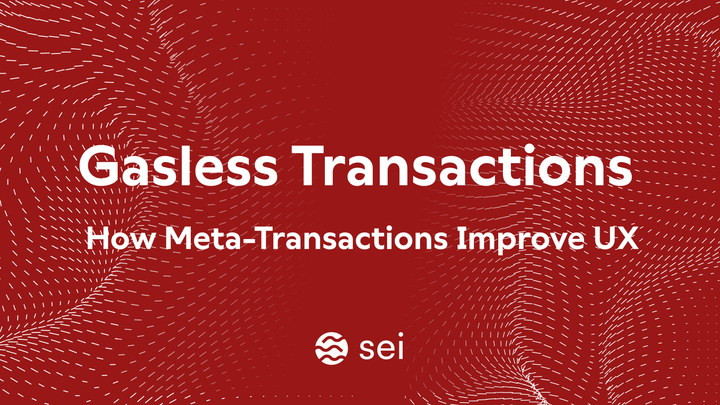Dynamic NFT Use Cases: Beyond JPEGs to Onchain Game Assets
Explore dynamic NFT use cases beyond static art. Discover how they power evolving game assets, interactive collectibles, and real-time digital upgrades.

NFTs have evolved beyond being static JPEGs to become living and changing digital assets in the form of dynamic NFTs (dNFTs). They update in real-time based on external data, user actions, or in-game events, making them perfect for use cases that extend far beyond profile pictures.
From interactive storytelling and evolving collectibles to real-time sports cards and responsive music NFTs, the possibilities are endless for dNFTs. In this article, we'll explore evolving use cases of dynamic NFTs in detail and understand what it takes to implement them.
Here’s an overview of what we’ll cover in this article:
- What are Dynamic NFTs?
- Use Cases of Dynamic NFTs Beyond Static Art
- How to Implement dNFTs: An Overview
- Sei Ecosystem and Dynamic NFTs
- Moving from Static Certificates to Living Digital Assets with Sei
It’s time to look beyond JPEGs and into the future of onchain assets that grow, adapt, and interact.
What Are Dynamic NFTs?
Dynamic NFTs (dNFTs) are programmable blockchain tokens whose properties, like metadata, appearance, or behavior, change automatically in response to time, user interactions, or external data.
They offer a significantly richer experience than early NFT collections such as CryptoPunks, BAYC and Azuki. dNFTs' properties change automatically over time, with user interaction, or in response to external data; however, the token remains a unique asset. It delivers high user engagement.
For example, a user owns a game character in the form of a dNFT. As they cross levels or reach an advanced stage in the game, the dNFT would allow changes in the character's visual appearance or behavior. A dNFT retains its identity onchain while acquiring new attributes as conditions evolve.
In practice, this is achieved by smart contracts that connect to offchain or onchain data (via oracle networks) and update the token's state accordingly. Overall, these dNFTs are opening up several use cases beyond images.
Key Technology Supporting dNFTs
A dynamic NFT typically utilizes a flexible token standard, often ERC-1155 on EVM chains, along with smart contract logic and oracle feeds. The smart contract is written to monitor specific conditions, such as game events, sports statistics, price feeds, and more after which a metadata update is triggered.
Oracles such as Chainlink or Pyth fetch external data, including player performance stats, weather, or IoT sensor data, and feed it onchain. The smart contract “listens” to these feeds and automatically modifies the NFT’s stored attributes or pointers. For instance, changing the image URL or updating a JSON metadata field.
It’s said that building a dNFT is more complicated than minting a static token, as it requires integration with oracles and offchain logic. However, for crypto-native developers, the tooling is evolving: many blockchains now offer libraries and examples for dynamic NFTs.
Use Cases of Dynamic NFTs Beyond Static Art
Dynamic NFTs unlock novel use cases by making tokens interactive and engaging. Here’s an overview of these NFTs' use cases categorized by industry and scenario.
Gaming and Virtual Assets
In decentralized games, dNFTs enable one token to evolve alongside the player. Instead of minting a new NFT for every sword upgrade or character transformation, a single NFT gains new stats, appearances, or abilities over time.
If a player wins a battle, the contract might automatically enrich the NFT. If they lose, it might pass the item to the victor. Oracles even enforce competition: the NFT’s ownership and attributes change according to offchain game scores. Another example is using verifiable randomness (VRF) to generate item traits on the fly. A loot box NFT might randomly upgrade to a legendary item upon opening.
A role-playing game character’s single NFT can level up and change gear as the player advances, rather than minting new tokens. It creates a seamless and immersive experience for the user. Players can see their owned assets grow with them, making onchain items feel as dynamic as any game object in Web2 gaming.
Augmented Reality and Location-Based NFTs
Dynamic NFTs can be tied to the real world via GPS and AR. Just as Pokémon GO overlaid game elements on physical locations, projects can mint or update NFTs based on location or real-world events.
For example, AR treasure hunts can mint NFTs at sponsored sites or random spots (using randomness or oracle time triggers) as part of fan engagement. Furthermore, in a wearable integration, a fitness app could reward a user with an onchain badge NFT when they log a sufficient number of steps onchain.
In all these cases, the NFT’s state updates dynamically. It might only unlock or change appearance when the GPS trigger is hit, or it might accumulate points as real-world actions occur. This blends physical and digital worlds as an event happens offline, and an NFT onchain reflects it in near real time.
Collectibles, Sports, and Entertainment
Dynamic NFTs bring new life to digital collectibles and memorabilia. For instance, a baseball card NFT is minted when a player breaks a record. The card’s rarity or metadata could update automatically based on in-game statistics fed through an oracle. Fans holding these cards see their NFTs update in real-time as their teams play, effectively merging fantasy sports with blockchain technology.
Because these NFTs respond to live data, they create collectible items that remain relevant and interactive over time.
Loyalty and Marketing Rewards
In business and marketing, dynamic NFTs can gamify customer engagement. For example, a retail brand could issue an NFT “coupon” that activates after a certain number of store visits or purchases. Unlike traditional paper coupons, these NFTs could auto-expire or change to reflect usage.
Loyalty programs can be designed as dNFTs. For example, a coffee shop can give customers a unique token that upgrades its design or unlocks rewards each time they visit. This provides users with a novel, game-like experience, where they collect “levels” as the dNFT evolves with its attributes.
Authenticity and Provenance
Beyond games and marketing, dNFTs shine in tracking real-world assets. An NFT serves as a dynamic certificate of authenticity that updates as an item moves through a supply chain. For example, when luxury goods or perishables are paired with a dNFT, its data (owner, location, or status) updates with the help of IoT sensors or logistics oracles.
On the other hand, a diamond NFT might record each validation step to ensure it’s conflict-free, or a pharmaceutical NFT might update when a batch passes quality control. This use case extends far beyond JPEGs, leveraging dNFTs as tamper-resistant records that interface blockchains with real-world operations.
Identity and Certification
In digital identity systems, dNFTs represent credentials that evolve over a person’s lifetime. For instance, a professional certificate dNFT might automatically mark itself as “completed” once the issuer’s oracle confirms a course was passed. Similarly, an onchain ID NFT could accumulate attestations as a user achieves milestones (e.g., passing KYC checks or adding academic qualifications.
This creates portable, self-sovereign identity tokens. For example, a student might hold an NFT that upgrades with a graduation badge once the university’s database oracle confirms their degree. These identity dNFTs remain immutable but dynamically reflect real-world status changes.
How to Implement dNFTs: An Overview
For blockchain developers, building a dynamic NFT involves combining token logic with data feeds. At a high level, developers would define an updatable NFT contract, often using ERC-1155 or ERC-721 with extensions and integrate oracles.
The contract holds the NFT metadata on-chain and includes a function that the oracle can call (or that any user can invoke) when a triggering event occurs. For example, a Solidity contract might implement an updateMetadata() function that, when called after an oracle fulfillment, changes the token’s attributes. Developers must ensure the contract checks conditions safely and allows updates from trusted oracles while validating signatures.
A Typical Developer’s Approach
A developer would mint a base NFT (ERC-1155) with initial metadata and write a smart contract that includes logic for when and what metadata to change. The next step is to set up an oracle to push relevant data into the contract.
In the oracle's callback, a developer would invoke the contract's update function to modify the NFT state. Developers can use VRF oracle for randomness and a data feed or API call for real-world events.
Exploring Sei’s advantage:
Sei offers some advantages for developers of dynamic NFTs. Its Twin-Turbo consensus yields 400ms block finality, which means users see NFT updates confirmed almost instantly. It feels like a Web 2.0 experience. The throughput is high, allowing for numerous NFT updates with minimal latency.

However, throughput in the form of transactions per second (TPS) doesn't paint a complete picture of the network's performance. It's better to consider "gas per second." Different types of transactions require different computational requirements. When looking at gas per second, it provides a broader perspective compared to TPS while considering compute in complex transactions. The Sei network can process up to 100 megagas per second.
Because dNFTs often require frequent contract interactions, Sei’s speed and low fees make testing and scaling easier.
Sei Ecosystem and Dynamic NFTs
Within the Sei ecosystem, several projects demonstrate the potential of dNFTs.
Archer Hunter's Giga Archery Edition 01 collection on Magic Eden exemplifies this potential as one of the top-trading NFT collections on Sei. These NFTs represent heroes and in-game assets that evolve with player progression—transforming from static collectibles into living assets that upgrade through gameplay. These games naturally incorporate evolving NFTs, whether it's character upgrades in Archer Hunter or cars that improve over races in Astro Karts. Even Sei's NFT marketplaces, such as Dagora and Pallet, benefit from the network's speed, allowing for real-time updates of NFT listings and trades.
From a technical standpoint, Sei’s latest upgrade further empowers dNFTs. The v2 upgrade introduced a parallelized EVM, with a throughput of 100 megagas per second. Most importantly, Pyth has deployed price oracles and VRF-like randomness on Sei V2, directly addressing two key needs for dynamic NFTs: real-time data feeds and secure randomness.
Crucially, the user experience on Sei can match what gamers expect from Web2 apps. With 400ms block finality, users see near-instant trades and updates.
Sei’s optimizations enable dynamic actions, such as receiving a minted NFT after an event or seeing a character level up, to happen in near real-time. For developers, this means dNFT features don’t slow down the app.
Moving from Static Certificates to Living Digital Assets with Sei
Dynamic NFTs’ use cases span from evolving game characters to location-based collectibles, from supply-chain provenance to on-chain credentials. For crypto-native developers, the key is marrying onchain logic with robust oracle data to define how and when NFTs change.
The Sei Network is positioned to accelerate this trend. Its high throughput and onchain data services lower the technical barriers.
Explore the Sei ecosystem for dynamic NFT use cases.



